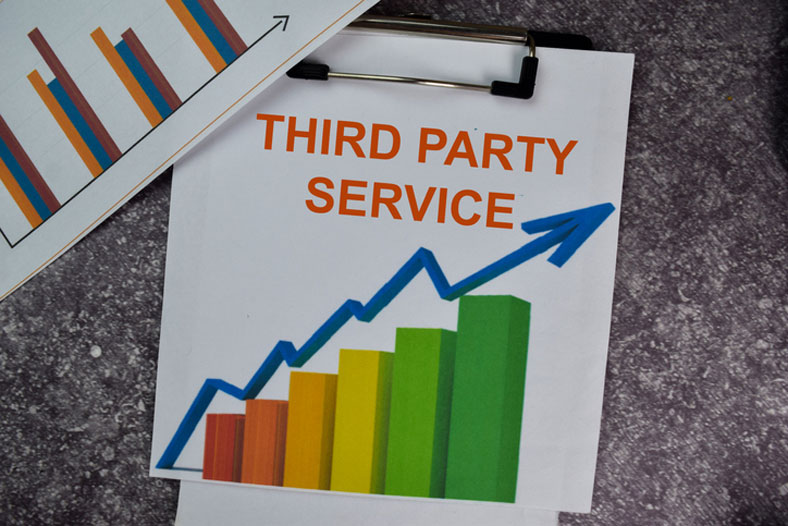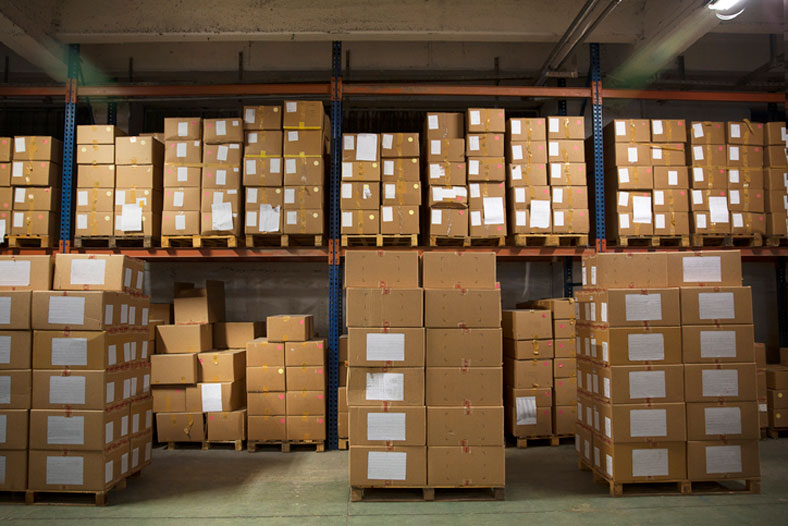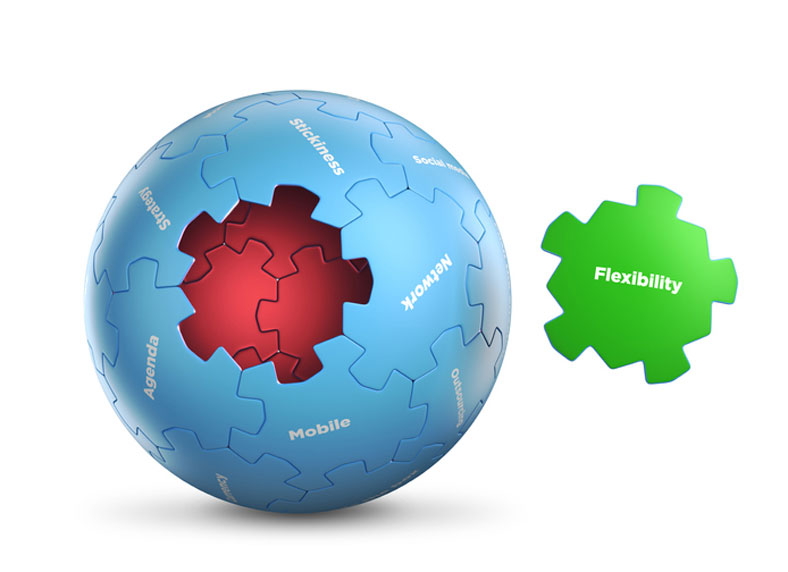Written by Scott Wilson
What is the difference between 3PL and 4PL? 3PL, or third-party logistics services, are those that focus on specific types of day-to-day logistics needs for businesses that manage their overall supply chain needs in-house. 4PL, or fourth-party logistics, adds additional management and oversight to those services to create a single outside resource for all supply chain needs.

Any education in supply chain management today will cover the wide world of logistics outsourcing. In an industry where specialization is often the key to efficiency, many organizations have hit on the solution of outsourcing their supply chain needs to experts.
The practice is so common that it comes with its own term… party logistics. The “party” in these cases refers to organizations other than the principal (first party) … so, second-, third-, and fourth-party organizations, and so on.
Originally, second-party would mean a vendor you contract with directly, third-party would be a vendor they contract with, and so on. These service provider categories described how many steps removed these outside parties are from the principal (first party) company or organization.
But in supply chain management, these terms have a meaning all their own. The difference between 3PL (third-party logistics) and 4PL (fourth-party logistics) has to do with a lot more than how many steps removed the service provider is.
Today, 3PL and 4PL are actually shorthand terms that describe the nature of the services those types of vendors provide.
How 3PL vs 4PL Logistics Services Emerged

In the logistics world, party-logistics no longer describes how many layers of vendors you are dealing with. For example, companies deal directly with both 3PL and 4PL vendors.
If you’re confused about either of these terms, don’t feel bad. There are actual research papers written by real university professors that disagree about how to define them. As you see how they are being used in both supply chain literature and by the companies themselves, you will note plenty of small differences in how they are viewed.
So, it’s worth looking into how both kinds of service emerged and have shaped one another.
3PL Describes Conventional Logistics Outsourcing Practices
Today, 3PL is simply thought of as basic logistics outsourcing. 3PL services can include transportation, storage, procurement, or any combination of standard logistics tasks. A 3PL company will provide full services on a large scale, however, as opposed to local or regional operations.

A third-party logistics provider (3PL):
- Focuses on specific, routine, well-defined logistics services
- Offers retail or various points of contact for different services
- Typically owns and operates their own facilities and gear
Third-party logistics is an old idea. For as long as moving goods has required specialized expertise in transportation, or as far back as some warehouse owner was willing to store goods belonging to other vendors, outsourcing has been a feature in logistics.
The term 3PL itself came about in the 1970s, describing intermodal marketing companies. Previously, most freight traffic was contracted directly with the shipper, whatever form that shipment was—by rail, air, sea, or whatever (2PL, or second-party logistics providers, in today’s jargon).
For long-distance shipments, a company might have to make and arrange transshipment with three or four different vendors to get goods and materials where they needed to be.
3PL companies came about by bundling those services, either through their internal capacity or by contracting with other companies. Trucking industry deregulation in the 1980s made it easier for such companies to run their own fleets, reducing their outsourcing needs. But for the final customer, simplifying the shipping process was made easier through 3PLs. And because they specialized and optimized routes and services, it could be offered at a lower cost than if it were done internally.
4PL Takes Supply Chain Outsourcing to the Next Level
4PL is a fully-managed supply chain solution. 4PL companies take charge of supply chain management, either providing or arranging through subcontracted services for all the steps necessary to inventory, ship, store, or receive products. They take on complete responsibility for supply chain management and oversight for clients.

A fourth-party logistics provider (4PL):
- Tailors services to individual client requirements
- Helps define those requirements using logistics expertise in their organization
- Gives clients a single point of contact for all logistics operations
- May often outsource day-to-day logistics services to third-party organizations
The 4PL stage is effectively an outgrowth of 3PL services. Particularly with the explosive growth of e-commerce worldwide, many companies already using 3PL services began to expand their reach. This put 3PL providers in the position of having to increase their own capacity and services. In many cases, they found the same advantages through outsourcing those functions to more specialized or regional 2PL or 3PL services.
At the same time, their expertise in managing large-scale logistics offered an additional level of value to clients. Rather than having to develop expertise in-house to oversee and manage vendor relationships, companies could rely on experienced 4PL services to take on those tasks.
4PL companies take on the entire supply chain management process for clients. They not only arrange shipment and storage, but develop operational plans, offer strategic advice, and deliver analysis and reporting.
A 4PL can be viewed as a strategic partner rather than a vendor. The level of data interchange will be higher than with a 3PL. 4PL providers take a broader perspective on the supply chain needs of the client. They require more in-depth information on strategic goals, operations, and resources.
What Is the Difference Between 3PL and 4PL Services in the Supply Chain?

In functional terms, both 3PL and 4PL vendors accomplish the same tasks: they ensure your stuff gets procured, stored, shipped, and delivered when and where you need it.
The big difference between 3PL and 4PL is in how in-depth the service level goes.
A 3PL company will offer specific logistics services, and typically some coordination and basic oversight.
A 4PL, on the other hand, takes more responsibility for not only ensuring service delivery, but also identifying and arranging the right services in the first place. A 3PL company won’t tell you that you’re picking the worst service level for your products; they might not even know what the products are. They’ll take your money and deliver packages where they are told to deliver them.
A 4PL looks at your company’s needs and strategy and identifies the best methods and services available to meet them. They will contract with outside 3PL or other vendors to make sure you are getting what you need. And they will manage the process so that it runs smoothly.
What Is the Best Solution for Logistics Outsourcing Between 3PL and 4PL Providers?

Clearly the level of outsourcing that is needed or appropriate will depend on the products and market of the organization that uses it.
In general, a 3PL company is a good choice for any organization that already has a supply chain strategy, or that doesn’t need a particularly sophisticated supply chain plan. They offer off-the-shelf services that can accommodate most basic storage and delivery requirements. Because of this, they are typically used by:
- Small organizations which are not yet using supply chain services as a strategic differentiator
- Larger companies that have very specific and well-defined needs that can be outsourced for financial savings
A 4PL, on the other hand, is often sought out by larger companies who are starting to run into the limitations of their own internal supply chain organizations. When a company gets to the point where SCM becomes a limiting factor or is a potential strategic advantage, a 4PL may be a turn-key solution for fleshing out the details.
On the other hand, 4PL service may be the first choice even for small organizations that understand from the outset that they will need strong and expert supply chain management, but who choose not to invest in an in-house team. When focusing on the core business makes the most sense, engaging with a 4PL provider from the start can be the solution.
The label that is slapped on that type of service matters far less than whether or not it creates more efficient supply chain and logistics solutions.
Of course, it’s not always a matter of 3PL vs 4PL. Businesses can make use of providers in both categories at different stages, and even for different facets of their supply chain needs.
It’s not worth getting too hung up on the precise distinctions between 3PL and 4PL services. At the end of the day, what supply chain professionals need to consider is the level of service provided and how well it matches the needs of their own organization.






